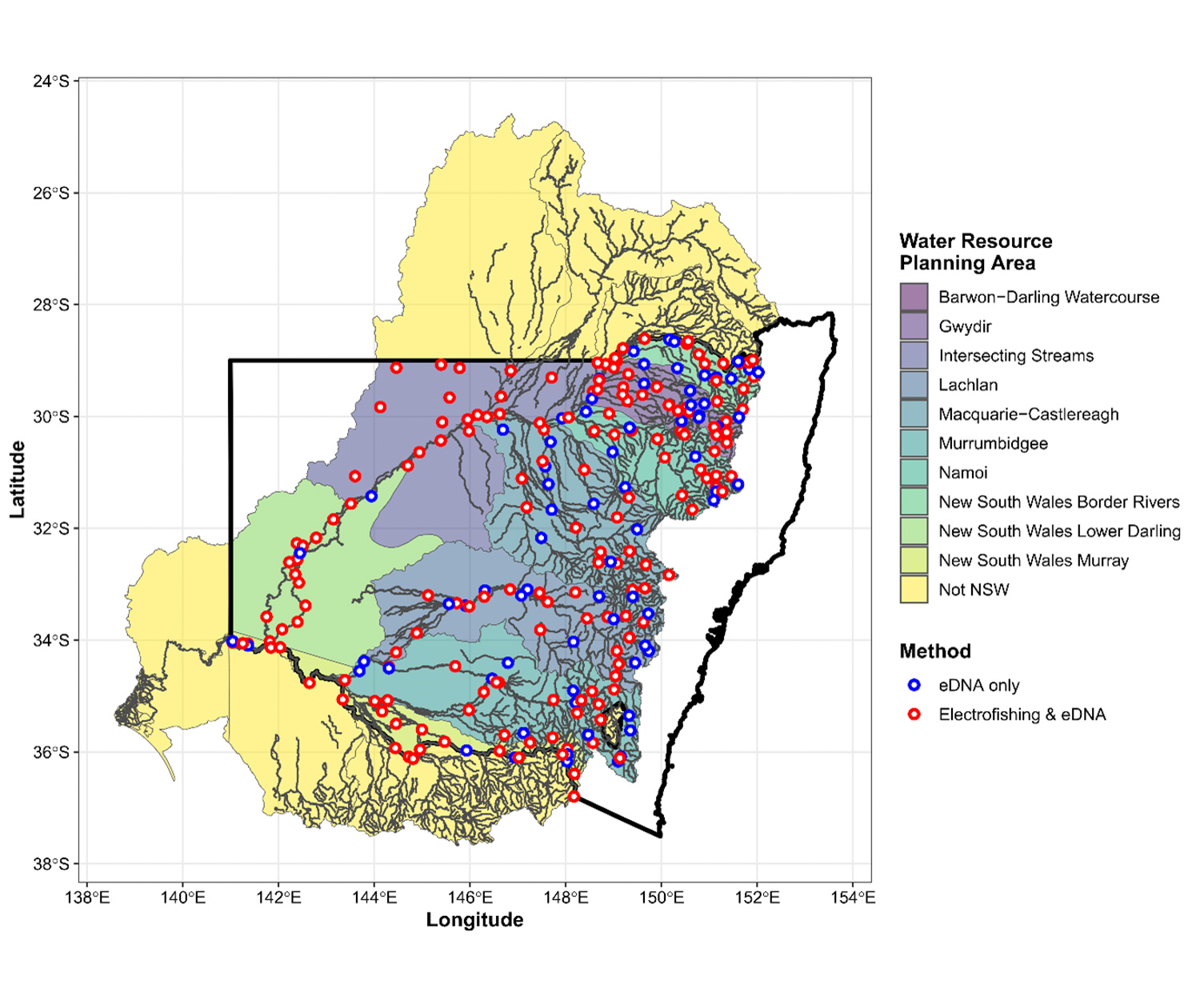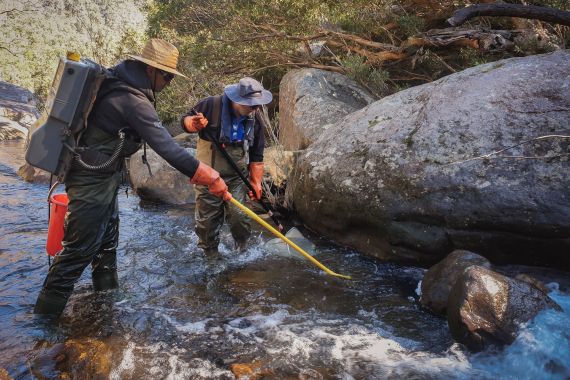
Basin Plan Environmental Outcomes Monitoring
The Murray-Darling Basin Plan aims to restore Australia’s largest river system. The goal is to achieve a healthy working river that sustainably supports communities now and into the future. The Basin Plan Environmental Outcomes Monitoring for fish (BPEOM-Fish) tracks progress towards this goal for fish populations. The program provides important data to guide adaptive, evidence-based management of fish populations.
The BPEOM-Fish program surveys fish populations at 240 sites across the NSW portion of the Murray-Darling Basin, from Boggabilla in the north, Albury in the south, and the Paroo and Menindee in the west. In 2022, BPEOM-Fish was re-designed to survey the same locations every year and create a strong time-series dataset. This allows analysis of long-term trends in fish populations and facilitates more meaningful relationships with communities.
As the fish surveys take place across a large area, this project spans many Indigenous Nations. Our project works to keep local communities and land councils informed of project progress and results.
Project Leader: Dr David Crook

How do we keep track of fish populations?
Fish can be hard to catch, and it can be difficult to predict their behaviour from day to day – as any angler would tell you! Our research teams are trained in the use of high-tech equipment that allows us to collect consistent and reliable data on the health of fish populations.
For the BPEOM-Fish surveys, electrofishing is combined with a genetics method – known as environmental DNA or ‘eDNA’.
- Electrofishing uses electricity to stun and collect fish, which are then identified, measured and returned to the water unharmed. It is used by fisheries agencies worldwide to provide quick and accurate assessments of the relative abundance of fish species. Bait traps are also used to sample small fish.
- eDNA surveys involve filtering a few litres of water using a special pump and very fine filter paper. This sample is taken back to the lab and analysed for traces of fish DNA. The technique is generating new insights into the distribution of rare and threatened species, which might not be captured using traditional methods like electrofishing.
Under the BPEOM-Fish program, electrofishing and eDNA are used at 166 sites, and eDNA alone is used at the remaining 74 sites. Surveys are mostly conducted over summer and autumn, with fieldwork starting in October and concluding in June.
Strong data to guide management
The BPEOM-Fish surveys build on three decades of similar monitoring efforts across the State. This creates a strong, long-term dataset to understand trends in the health of fish species. Specifically, we quantify changes in abundance and distribution of key species and identify areas where recruitment is or is not occurring regularly.
For example, the breeding success of many fish species is affected by the amount of flow in the river. Our monitoring data is used to develop scientific understanding of the ecological requirements of the different fish species. This information is then used to support water management, including the most effective use of environmental water allocations.
BPEOM-Fish reports
Reports covering 2014-2020 are now available for the entire NSW portion of the Basin and each of the major rivers.
- BPEOM 2014-2020 Full report (45MB)
- Chapter 1. Title Page and Introduction
- Chapter 2. Barwon-Darling Watercourse
- Chapter 3. Gwydir
- Chapter 4. Intersecting Streams
- Chapter 5. Lachlan
- Chapter 6. Macquarie-Castlereagh
- Chapter 7. Murrumbidgee
- Chapter 8. Namoi
- Chapter 9. NSW Border Rivers
- Chapter 10. NSW Lower Darling
- Chapter 11. NSW Murray
The latest reports, from the 2022/2023 sampling season will be available soon. NSW DPI Fisheries intends to release updated reports every year to provide annual snapshots for NSW Water Resource Planning Areas (WRPA). This is important because this is the scale at which water delivery is managed. However, the reports are designed to inform management decisions; not provide specific recommendations.
Get in touch
For more information regarding the BPEOM-Fish program please contact:
- Dr David Crook david.crook@dpi.nsw.gov.au
- Rosy Lone rosy.lone@dpi.nsw.gov.au





